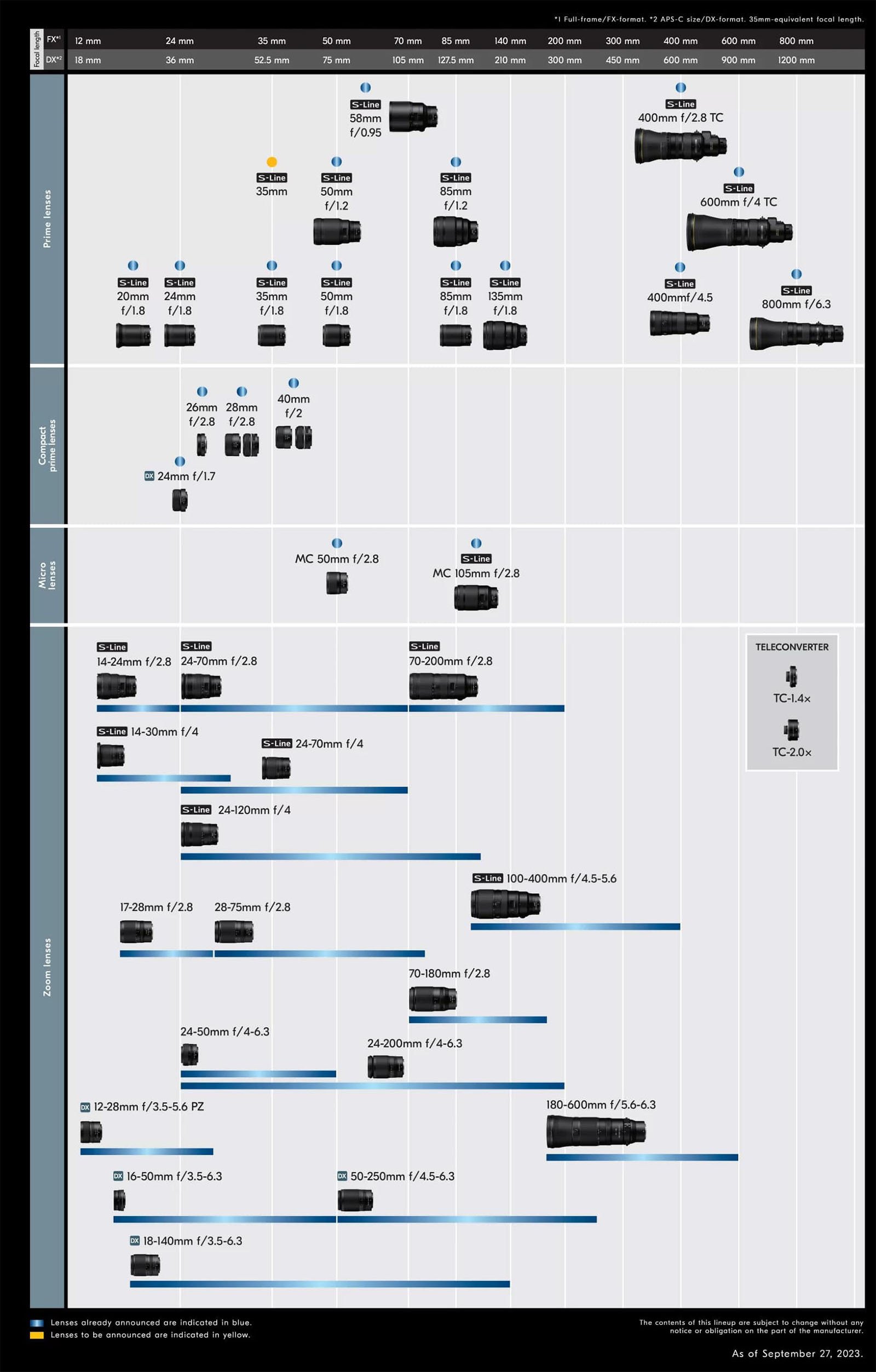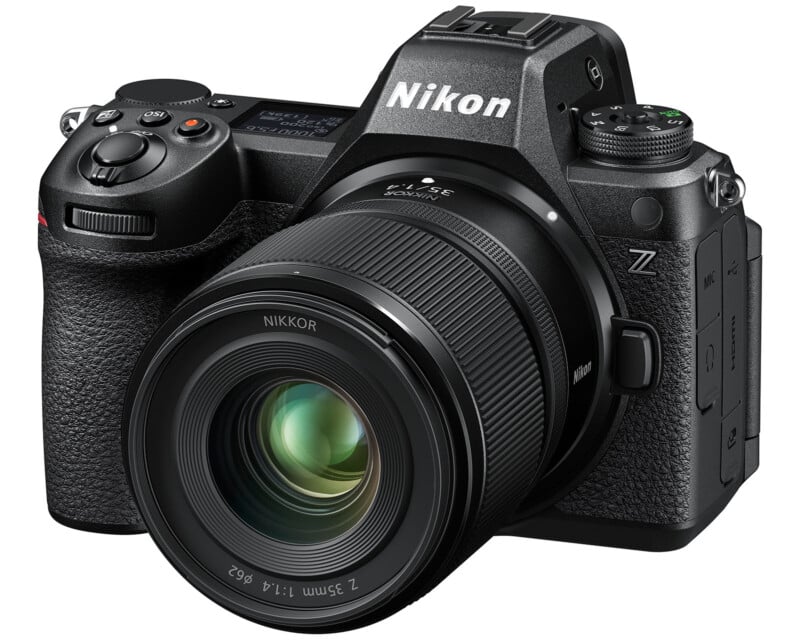Tech
Nikon’s Surprising New Z 35mm f/1.4 Lens Points Toward a Great Future
Since Nikon announced the Nikkor Z 35mm f/1.4 lens last week, I have been asking myself — and Nikon — a lot of questions about it. What about the 35mm S-Line lens on the roadmap? Is this new lens a sign of affordable f/1.4 lenses to come? What’s Nikon’s overall strategy?
What About the Promised 35mm S-Line Lens?
The only lens on Nikon’s most recent and final lens roadmap that has yet to see the light of day is a “35mm S-Line” lens.
Interestingly, the new Nikon Z 35mm f/1.4 is not an S-Line lens and was never featured on a Nikon lens roadmap. As Nikon said when it ditched roadmaps, it wanted to surprise people. Well, I’m surprised.
As for whether the 35mm S-Line lens on that roadmap is still coming, PetaPixel asked Nikon.

“Nikon does not comment on future product or speculation,” Nikon replied. Despite repeated attempts to glean anything more, the position remains unchanged: Nikon won’t say.
But I will.
For numerous reasons, I am confident that the Nikon Z 35mm S-Line lens is still in development and that the new Nikkor Z 35mm f/1.4 is not a replacement for it.
Nikon’s decisions regarding the Z Mount offer some insight into its strategy. Nikon initially prioritized Nikkor Z f/1.8 S-Line prime lenses, which provide excellent performance and portability. The Nikkor Z 35mm f/1.8 S and 50mm f/1.8 S lenses were two of the company’s first three native Nikkor Z lenses, alongside the Nikkor Z 24-70mm f/4 S.
While f/1.8 is traditionally a “slower” aperture for pro-oriented prime lenses, the S-Line Series promises exceptional edge-to-edge performance when shot wide open and features Nikon’s most advanced optical designs and technologies.

Nikon followed up the 35mm and 50mm f/1.8 S primes with a Nikkor Z 20mm f/1.8 S, 24mm f/1.8 S, Nikkor Z 85mm f/1.8 S, and Nikkor Z 135mm f/1.8 S Plena.
Alongside these f/1.8 S-Line lenses, the company began its foray into f/1.2 S-Line territory, with the Nikkor Z 50mm f/1.2 S and 85mm f/1.2 S. When Nikon put a 35mm S-Line lens onto its roadmap, it was only natural to expect a 35mm f/1.2 S lens to arrive. And that is precisely what I expect to arrive at some point. It makes sense to continue this pattern, and a 35mm f/1.2 lens is certainly achievable, as Sigma has demonstrated with its 35mm f/1.2 DG DN Art lens.
Nikon’s Choice to Go f/1.4 and Affordable
When asked how the new Nikkor Z 35mm f/1.4 lens compares to the 35mm f/1.8 S in terms of performance, Nikon replied, “The Nikkor Z 35mm f/1.4 is a lens that takes advantage of the fast maximum aperture of f/1.4 to produce large, soft bokeh, whilst offering an excellent balance of cost, compactness, light weight, and optical performance.
“On the other hand, the Nikkor Z 35mm f/1.8 S maximizes lens performance even at maximum aperture, with superior rendering capabilities including excellent resolving power all the way to the extreme edges of the frame,” Nikon continues.

This is a marked departure from how Nikon approached its fast prime lenses for F mount. First, Nikon didn’t release any f/1.2 primes for DSLR cameras. Yes, the company has had f/1.2 lenses (and faster) lenses, but they were released during the film SLR era.
Beyond that, Nikon’s f/1.4 lenses featured the company’s best optical technologies. In many cases, the f/1.8 primes were the more affordable options for photographers who didn’t demand the best performance or didn’t want to have large, heavy glass.
That is a significant part of what makes the Nikkor Z 35mm f/1.4 fascinating. It is an outlier for Nikon because it is less expensive than the 35mm f/1.8, weighs less despite being faster, and does not promise the same level of optical performance. These are uncharted waters for Nikon.
If I may put on my speculation hat again, the originality probably won’t stay novel forever. I’m not talking about rumors here, but simply surveying the landscape and thinking about what I would do if I were making decisions at Nikon.
The Nikkor Z 35mm f/1.4 isn’t just cheaper than the Nikkor Z 35mm f/1.8 S lens; it’s more affordable than many 35mm prime lenses on the market for any full-frame mirrorless camera. Yeah, Sigma’s 35mm f/1.4 DG DN Art is $899, which is reasonably affordable but still $300 more expensive than Nikon’s new 35mm f/1.4. Sony and Canon have 35mm f/1.4 lenses that cost $1,398 and $1,499, respectively. Those are pricey. Even Sony’s older Distagon T* FE 35mm f/1.4 ZA lens, left in the dust optically by the 35mm f/1.4 GM, is $998.
Nikon isn’t just doing something different from what it has done before; it’s doing something unlike everyone else in the market, and it’s brilliant.
Nikon has high-quality f/1.8 S lenses at popular focal lengths like 20mm, 24mm, 35mm, 50mm, and 85mm. Then there’s the Nikon Z 135mm f/1.8 Plena, a different beast. These are all great lenses that are plenty fast for most pros.

For those who demand more, Nikon has also expanded its f/1.2 S-Line offerings. However, it’s unreasonable to expect complete overlap between all f/1.2 and f/1.8 S lenses — a 20mm f/1.2 S lens would be pretty shocking, for example.
A common theme is that Nikon is up to unusual things with its prime lenses, whether making pro-level f/1.8 primes, affordable f/1.4 lenses, or getting back to making f/1.2 (and faster) primes. In nearly every way, Nikon’s Z primes differ from what the company did with its F-mount. Nikon is putting that giant diameter and short flange distance to very exciting use.
The excellent f/1.8 S primes are built for demanding enthusiasts and professional photographers. If people need more speed, there are the f/1.2 options, but they’re expensive and large. You pay a heavy premium for that speed and S-Line performance at the maximum aperture.
But what if you want a fast lens but are not a pro? You don’t necessarily need the S-Line features of the f/1.8 lenses, but like that, they’re not big and heavy. As evidenced by the new Nikkor Z 35mm f/1.4 lens, Nikon seems able and willing to provide a “middle ground” that offers more speed and most of the performance while not being bigger or heavier.
The “middle ground” has never looked quite like this before, but why should being different deter Nikon? Just because no major manufacturer has used f/1.4 prime lenses as their “affordable” option before doesn’t mean it can’t be done. It’s obvious now that it can be, and I’m here for it.
Image credits: Header photo licensed created using an asset licensed via Depositphotos.


)






